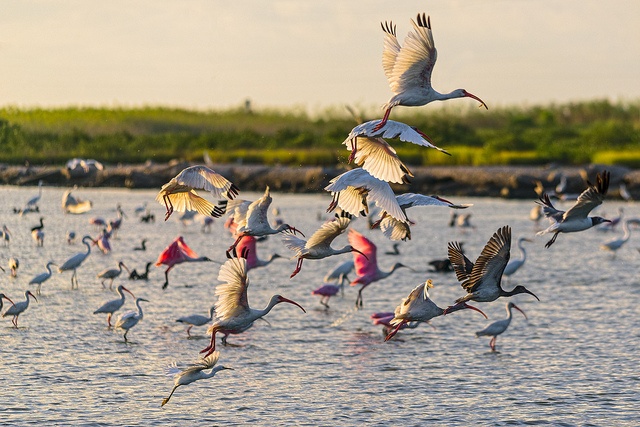We have much more to do and your continued support is needed now more than ever.
Clean Water Under Threat at Supreme Court
On October 3, 2022, the Supreme Court will hear a case that could remove longstanding protections for roughly half the nation’s streams and wetlands. Sackett v. EPA — an already historic occasion as Justice Ketanji Brown Jackson’s first case — will re-visit the Clean Water Act a landmark law that protects our waters from unregulated pollution and destruction. It is responsible for the fact that our waters are no longer on fire or used as open sewers, conditions that led to the act’s sweeping, bipartisan passage fifty years ago.
The purpose of the Clean Water Act is to “restore and maintain the chemical, physical, and biological integrity of the Nation’s waters.” To achieve this goal, Congress created a cooperative federal structure that gave the Environmental Protection Agency and the U.S. Army Corps of Engineers broad authority to protect important waters throughout the watershed.
As such, the important small streams and wetlands that provide flood control, recharge waters during drought, filter pollution, and provide habitat have been protected. These small streams and wetlands are the kidneys and sponges of larger rivers and lakes, safeguarding the health and safety of those communities that depend on such waters.

On October 3, the Supreme Court will be asked by a radical opponent of clean water to remove federal protections for these waters. If they do, it will be open season for the federally unregulated pollution and destruction of many of the nation’s important waters.
The results would be catastrophic. Well over half of the streams that supply drinking water to communities could be rendered unsafe. At least half of the nation’s wetlands that protect communities from flooding would be at risk of being filled in and paved over. Upstream waterways that store and filter water could be erased from the landscape, worsening droughts and water quality.
With climate change fueling more intense storms, longer and deeper droughts, and temperatures that will catalyze harmful algal growth and exacerbate pollution, the functions performed by healthy natural water systems are all the more critical.

These impacts will hit frontline communities hardest. Decades of under-investment in drinking water and proper treatment of waste means communities that have already historically faced a disproportionate share of flooding and water pollution, will have to bear the brunt of this ruling. The case also threatens progress on an important rule to clarify protections. A split ruling by the Supreme Court in 2006 (in Rapanos v. US) created some confusion around which waters the Act protects. However, case law consensus has since emerged that gives EPA and the Corps the ability to protect waters that alone or collectively have a “significant nexus” to larger, navigable lakes, rivers, bays, and oceans. After attempts to rollback protections under the previous administration, EPA has been in the process of updating rules that would use science to clarify protection for important streams and wetlands.
The Supreme Court could tie EPA’s hands to clarify such protections, leaving to Congress to fix the damage done by a ruling that could cripple the Act. Given the current polarization in Congress, such a fix may prove elusive, putting communities that have been protected for the last century at risk. This would not only set water quality protections back 50 years, but further put at risk communities suffering from both waters that need extensive clean up and crumbling infrastructure that is at high risk of failing when exposed to conditions like flooding and excess pollution.

National Wildlife Federation and our partners filed a friend-of-the-court brief in support of the EPA that shows how narrowing the coverage of the Clean Water Act would have devastating effects on wetlands, rivers and streams, fish and wildlife habitat, and recreational opportunities for the millions of people that enjoy our public lands and the outdoors. Regardless of the Court’s decision, it is imperative that we are are ready to defend clean water and the communities that depend on it. Without clean water and healthy systems, we cannot have healthy communities or wildlife.
Add your name today in support of strong clean water protections for wetlands and streams that wildlife and communities rely on!






















